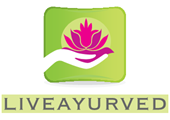The gallbladder is a small organ located in the upper right abdomen, just beneath the liver. Gallstones, also known as cholelithiasis, are solid deposits that form within the gallbladder. In most cases, medical intervention is required for treatment. This condition can persist for years or even a lifetime.
Types of Gallstones:
Cholesterol Gallstones - These are the most common type, appearing yellow-green in color.
Pigment Gallstones - Dark brown or black stones formed due to excess bilirubin in bile.
Symptoms of Gallstones:
Pain in the upper right abdomen or back.
Sudden, intense pain in the centre of the abdomen.
Indigestion.
Vomiting.
Nausea or fatigue.
Abdominal cramps.
Pain in the right shoulder.
When to Seek Medical Attention:
Severe abdominal pain that prevents you from sitting or standing comfortably.
High fever accompanied by chills.
Yellowing of the skin and whites of the eyes (jaundice).
Risk Factors:
Certain factors may increase the likelihood of developing gallstones, including:
Being female.
Leading a sedentary lifestyle.
A family history of gallstones.
Blood disorders such as sickle cell anemia.
Diabetes.
Causes of Gallstones:
Gallstones form due to an imbalance in the chemical composition of bile. Potential causes include:
Excess cholesterol or bilirubin in bile.
Insufficient bile salts.
The gallbladder is not emptying properly.
The exact cause of gallstones remains unclear. However, a chemical imbalance within the gallbladder can lead to the formation of tiny crystals in the bile, which may gradually grow into solid stones.
Preventive Measures:
Stay well-hydrated by drinking plenty of water.
Consume fibre-rich foods such as whole grains, beans, peas, fruits, and vegetables.
Limit sugar intake and refined carbohydrates.
Include healthy fats like olive oil and fish oil in your diet.
Avoid desserts and fried foods.
Maintain a healthy weight.
Exercise regularly.
Managing Gallstones:
Incorporate the following yoga asanas into your fitness routine to support gallbladder health:
- Shalabhasana (Locust Pose)
- Pachimotasana (Seated forward bend)
- Dhanurasana (Bow pose)
- Bhujangasana (Cobra pose)
Additional management tips:
If overweight, lose weight gradually rather than rapidly.
Avoid crash diets or extreme calorie restriction (less than 800 calories per day).
Eliminate alcohol and dairy products from your diet.
Treatment Approach:
A well-balanced diet is crucial for managing gallstones. Consult with your doctor to develop a personalized diet plan alongside medical treatment for optimal health.
|
